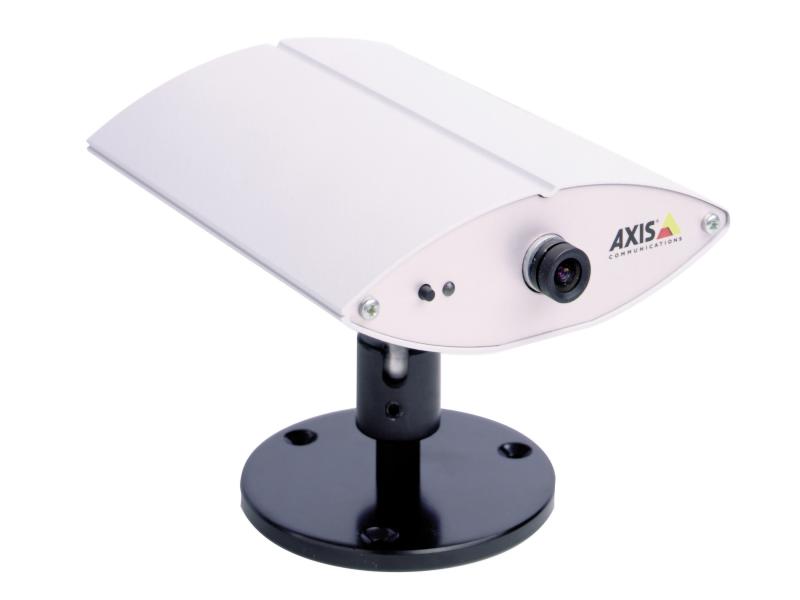CCTV has many positive effects, whether it be deterring criminals, capturing crime, securing your premises, and of course, protecting your staff along with your assets.
The CCTV systems available today are completely different from the early systems that were available. Here is a quick guide to the history of CCTV.
1927 – Mechanical CCTV System
Many website articles mention the earliest version of CCTV being around 1942. However, there was an early mechanical CCTV system developed in June 1927 by the Russian physicist, Léon Theremin. As you can imagine, the system was very simple and consisted of a manually-operated camera that then sent images through a wireless software transmitter and receiver. It had a resolution of only 100 lines.
The CCTV system was subsequently installed in the courtyard of the Moscow Kremlin to monitor approaching visitors after being demonstrated to Joseph Stalin.
1942 – CCTV in WW2
The next mention of CCTV was the one which usually gets mentioned as the first CCTV system. This was installed by Siemens AG at Test Stand VII in Peenemünde, Nazi Germany, in 1942. This was used for observing the launch of V-2 rockets from a safe distance and has been credited to German electrical engineer, Walter Bruch.
1949 – Commercial CCTV in the US
Commercial CCTV systems didn’t hit the market in the United States until 1949. The system was called Vericon, and there are very few records of how the system worked. We do know that it was advertised as ‘not requiring a government permit’, which made it accessible for both businesses and homeowners for the first time.
1951 – The Videotape Recorder was Invented
Charles Ginsberg was a researcher at the US-based Ampex Corporation when he invented the videotape recorder in 1951. It worked by taking live images from cameras and converting them into electrical impulses stored on a magnetic tape. Ampex sold the first videotape recorder in 1956 for $50,000! The videotape recorder was then coupled with CCTV to enable the recording of CCTV images for later viewing.
1960 – The UK Uses CCTV
The Metropolitan Police twice set up temporary CCTV cameras in Trafalgar Square in 1960. The first was to monitor crowds who had gathered to welcome the arrival of the Thai royal family, and the second was to monitor activities on ‘Guy Fawkes Day’ in the same area.
1961 – London Transport Install CCTV
The first video surveillance system was installed at a London transport train station in 1961.
1964 – Liverpool Police Trials CCTV
1964 saw Liverpool Police experiment with the installation of four hidden cameras to catch criminality.
1965 – CCTV System to Monitor Vandalism
In 1965, British Rail installed a CCTV system to watch a particular section of track near Dagenham that had seen frequent vandalism. The system was installed to deter or catch the perpetrators in action.
1966 – The Home Security System is Created
Private home security is something we now take for granted, with cameras used throughout the world. The first inventor of the home CCTV system was African American inventor, Marie Van Brittan Brown, and her husband, Albert Brown, an electronics technician. Marie worked as a nurse and, as she worked irregular hours, it meant she was often home alone. The crime rate in her neighbourhood was high and the police were often slow to respond. This led Marie to invent a system that incorporated a series of peepholes, cameras, and a remote control hatch. Her patent was granted in 1969 and was used as an example in more than 30 other patent applications.
1967 – Retail Sector Catches on to CCTV
Businesses now start to realise the potential of CCTV and retail outlets start to install systems in order to deter or catch shoplifting in the act.
1969 – Met Police Invests in CCTV
The Met Police install permanent cameras in London’s Parliament Square, Whitehall, and Grosvenor Square.
1970s – VCR Introduced into CCTV
The emergence of Video Cassette Recordings (VCRs) was a major development in the history of CCTV. This technology meant that CCTV monitoring screens no longer needed to be watched live. Instead, the systems could be set up and the images recorded onto a VCR and watched back when required. This made CCTV systems much more affordable and attractive for businesses and organisations across the world.
However, it is important to know that the VCR solution was far from perfect. The tapes need to be changed on a regular basis or the information on them would be re-written. Therefore, if users needed to store the CCTV images for later viewing, they had to keep a library of tapes.
1974 – The Start of Using CCTV for Traffic Monitoring
Surveillance cameras are installed for the use of monitoring traffic after being set up on major roads that run in and out of London.
1975 – The London Underground
Four London Underground stations need to monitor football crowds travelling to and from football matches, so they install CCTV systems in order to do this.
1976 – Charge-Coupled Device (CCD)
This technology leads to the creation of cameras that can be used in low-light situations. These used microchip technology and made round-the-clock surveillance possible.
1985 – Bournemouth
The 1980s saw many trials of CCTV, including Bournemouth trialling an outdoor CCTV system in 1985.
1987 – Norfolk
The first use of CCTV by the local government was in King’s Lynn, Norfolk, in 1987.
1990s – Multiplexing
Another significant development in the history of CCTV was when multiplexing solutions became available. This technology allows a video signal from a number of CCTV cameras to be combined together and displayed on one monitor. This solution allowed CCTV to move forward and made CCTV more popular.
1993 – Bishopsgate IRA Bombing
The IRA bombing in Bishopsgate, London, resulted in the ‘Ring of Steel’ around the capital; with CCTV cameras playing a prominent role in this.
1996 – The First IP Camera Invented
The first IP Camera was invented by Axis Communications in 1996 – The AXIS Neteye 200.
2000s – Digital Video Recorders
Progress in digital technology since the early 2000s has led to VCRs being replaced with Digital Video Recorders (DVRs), which allows CCTV to be more user-friendly. Multiplexers, from the early 90s, are now built into these solutions, meaning kits are easier to install and operate. The other advantage of digital systems has removed the need for videotapes and the storage of them.
2002 – The Rise of NVR
IP based video systems appear, dubbed Network Video Recorders (NVR). These systems work by encoding and processing video in cameras and then streaming the footage to NVRs for remote viewing or storage. These solutions are useful for companies with many site locations as they allow users to view high-quality recordings while remote viewing.
2005 – IP Camera with VCA
The first IP camera with onboard Video Content Analytics (VCA) was released in 2005 by Intello. The camera was able to detect a number of different events, such as if a car was moving in a certain direction, a human crossed a line, an object was moved, or a human crossed a line.
2007 – Major Brands Release IP Cameras
Samsung, Panasonic, and Sony release high performing IP cameras to the market.
2008 – ONVIF
IP video surveillance manufacturers use ONVIF (Open Network Video Interface Forum) as a way to standardise network interfaces to support compatibility between systems.
2013 – 5.9million Cameras in the UK
The British Security Industry Authority (BSIA) estimated that Britain has a CCTV camera for every 11 people. That’s 5.9 million active cameras in the country. This was based on data by writers Michael McCahill and Clive Norris in 2002, so the number may be inaccurate.
2014 – IP Takes the Crown
It is estimated that 2014 was the first year that IP cameras outsold traditional analogue cameras.
2015 – 4K
4K cameras entered the market and provide incredibly high-resolution images.
The world of CCTV has seen a meteoric rise since its invention and will continue to enhance in the years to come.





